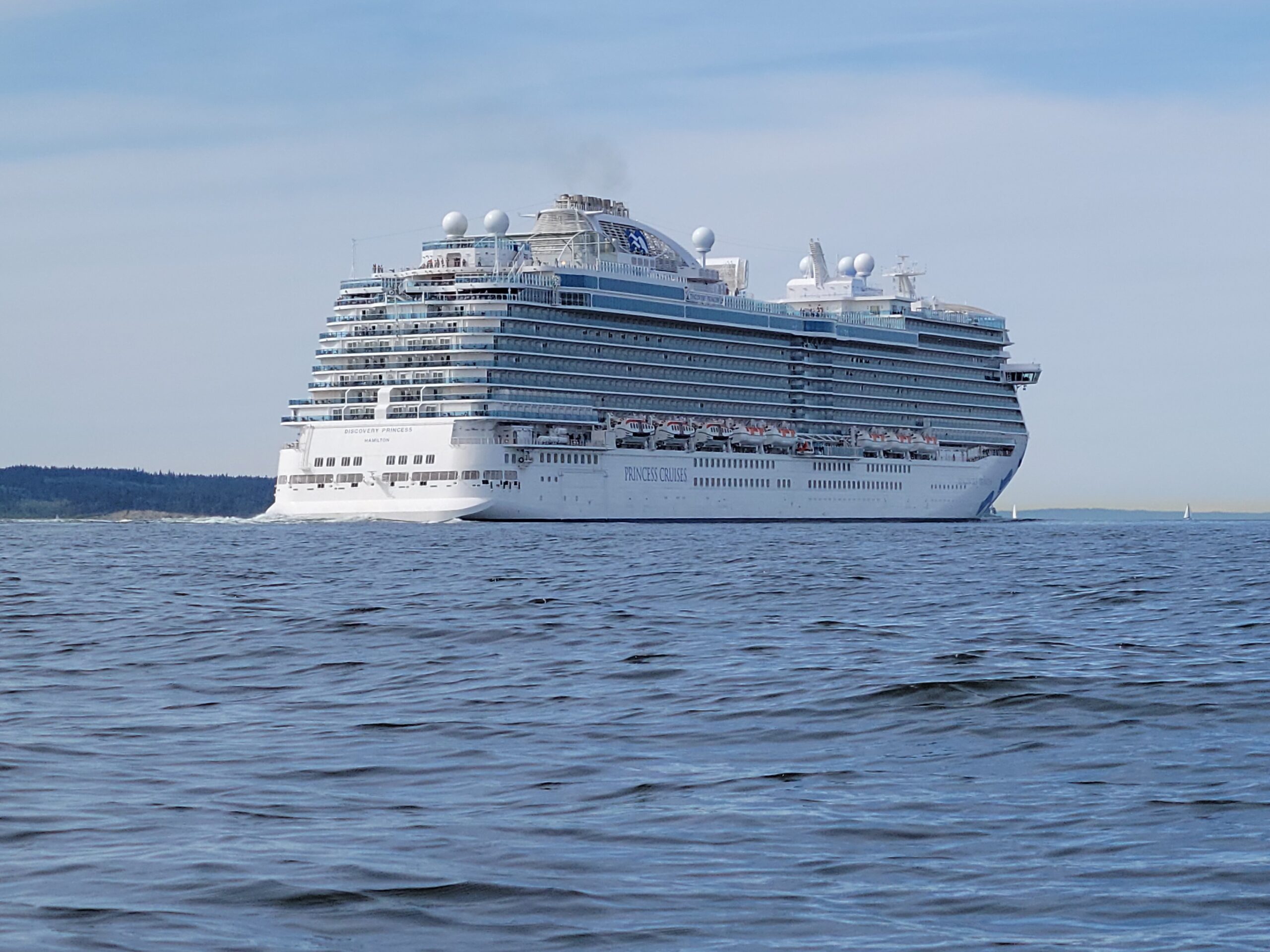
24 Jun Green Corridor is a Greenwash
What is a “Green Corridor”?
Yet another example of Greenwashing!
By Tom Barnard and Jordan Van Voast, L.Ac.
With great fanfare, the Port of Seattle recently announced the establishment of a “cruise led Green Corridor,” where zero greenhouse gas (GHG) emission cruise ships – not currently feasible at scale – will ply the major routes between Washington, British Columbia and Alaska. It’s a joint venture with the municipal government of Juneau, the Vancouver Fraser Port Authority, leading global cruise lines, as well as the Global Maritime Forum, Blue Sky Maritime Coalition, and Washington Maritime Blue.
The concept sounds praiseworthy: “a green corridor will establish the technological, economic, and regulatory feasibility needed to accelerate implementation of low and ultimately zero GHG emission vessels.” Yet the entire project is wishful thinking. While it is true that there are a few zero emission “cruise” ships in the early development stage, they are only a small fraction the size of current mega cruise ships (they’re similar in size to a Washington state ferry) and planned for short distance travel. There are no zero emission ships envisioned for carrying thousands of passengers to Alaska and back, as the battery technology is unfeasible and nowhere on the horizon.
Even if cruise corporations were to develop such ships, approximately 85 percent of current cruise passengers fly in and out of Seattle on planes, with all the emissions, noise and toxic impacts that entails. That is unlikely to change.
In the meantime, while the Port and its colleagues spend valuable time and money proclaiming speculative enterprises, cruise ships continue to degrade the environment between Seattle and Alaska. Although the “green corridor” advocates for zero-emissions ships, the cruise lines continue targeting net zero emissions by 2050 – 28 years from now. These are two different goals: “zero emissions” means zero, while “net zero” allows cruise ships to continue emissions as long as another party stores an equivalent amount of carbon.
Furthermore, to align with the Paris Accords, the goal should be reducing emissions 45% from 2010 levels by 2030. Instead, current projections show emissions rising 14% by 2030. Pretending that we can ignore the 2030 goal and then achieve the 2050 goal is dangerously irresponsible and represents a moral crime against the vast majority of countries in the world that have contributed the least emissions, but may suffer the most impact.
The Port and major cruise lines are engaged in yet another example of “greenwashing,” via the usual public relations verbiage. Their announcement looks like a classic example of “industry capture” – where the private sector wields so much influence over public agencies that government spokespersons actually start mimicking the language and strategies of the companies they are supposed to regulate.
Looking more closely, the agreement claims that “voluntary participation by operators is a significant element for successful green shipping corridors…all vessels transiting a green corridor would not be required to be zero emissions or to participate in the partnerships.” Maritime leaders, public and private, yearn to give themselves “green” labels for all these efforts. Yet climate scientists have made it abundantly clear that we do not have time for investing in hypothetical technologies for non-essential industries like cruise if we are to avert climate tipping points and runaway warming of the planet. We need to reduce emissions now, not fall for vague promises of voluntary “net zero ships” that will be free to continue harming the climate indefinitely into the future.
Tom Barnard, a Former Port of Seattle Policy Analyst. Jordan Van Voast is a Licensed Acupuncturist. Both are founding members of Seattle Cruise Control, a volunteer organization raising awareness about the labor abuses, climate, ecological, and public health harms of the cruise industry.


Sorry, the comment form is closed at this time.